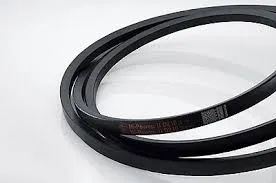- Arabic
- French
- Russian
- Spanish
- Portuguese
- Turkish
- Armenian
- English
- Albanian
- Amharic
- Azerbaijani
- Basque
- Belarusian
- Bengali
- Bosnian
- Bulgarian
- Catalan
- Cebuano
- Corsican
- Croatian
- Czech
- Danish
- Dutch
- Afrikaans
- Esperanto
- Estonian
- Finnish
- Frisian
- Galician
- Georgian
- German
- Greek
- Gujarati
- Haitian Creole
- hausa
- hawaiian
- Hebrew
- Hindi
- Miao
- Hungarian
- Icelandic
- igbo
- Indonesian
- irish
- Italian
- Japanese
- Javanese
- Kannada
- kazakh
- Khmer
- Rwandese
- Korean
- Kurdish
- Kyrgyz
- Lao
- Latin
- Latvian
- Lithuanian
- Luxembourgish
- Macedonian
- Malgashi
- Malay
- Malayalam
- Maltese
- Maori
- Marathi
- Mongolian
- Myanmar
- Nepali
- Norwegian
- Norwegian
- Occitan
- Pashto
- Persian
- Polish
- Punjabi
- Romanian
- Samoan
- Scottish Gaelic
- Serbian
- Sesotho
- Shona
- Sindhi
- Sinhala
- Slovak
- Slovenian
- Somali
- Sundanese
- Swahili
- Swedish
- Tagalog
- Tajik
- Tamil
- Tatar
- Telugu
- Thai
- Turkmen
- Ukrainian
- Urdu
- Uighur
- Uzbek
- Vietnamese
- Welsh
- Bantu
- Yiddish
- Yoruba
- Zulu
Aug . 14, 2024 16:50 Back to list
Comprehensive Guide to V-Belt Standard Sizes and Their Applications in Various Industries
Understanding V-Belt Standard Sizes
V-belts are a crucial component in many mechanical systems, widely used for power transmission in various industrial applications. Their design and construction allow them to effectively transfer power between different components, making them essential in machinery used in manufacturing, automotive, and household appliances. Understanding the standard sizes of V-belts is key to selecting the right type for your needs.
What is a V-Belt?
A V-belt is a type of conveyor belt with a trapezoidal cross-section that fits into a corresponding groove within pulleys. This shape allows the belt to wedge itself into the pulley, providing a secure grip and ensuring efficient power transmission. The tension provided by the V-shape helps counteract slippage, making V-belts ideal for high-load applications.
Standard Sizes of V-Belts
V-belts are classified into various standard sizes, and these sizes are determined based on both the width and height of the belt's cross-section. The most common standards include the A, B, C, D, and E series, each designed for specific applications and load capacities.
1. Series A The A series has a cross-section size of 0.375 inches in height and 0.687 inches in width. They are commonly used in light-duty applications, such as small machinery and home appliances.
2. Series B The B series measures 0.5 inches in height and 0.875 inches in width. These belts are suitable for medium-duty applications, making them ideal for industrial machinery and agricultural equipment.
v belt standard sizes

3. Series C This series, with a height of 0.625 inches and a width of 1.125 inches, is designed for heavy-duty applications. Belts in this category are often used in larger industrial settings where greater power transmission is required.
4. Series D and E The D series has a height of 0.75 inches and width of 1.5 inches, while the E series measures 1 inch in height and 2 inches in width. These belts are used in very heavy-duty applications, including mining and large manufacturing operations.
Length Considerations
In addition to the cross-sectional shape, the length of V-belts is also a critical factor for proper fit and performance. V-belts are typically measured in inches, and their length can vary depending on the specific application. Common lengths range from 15 inches to over 200 inches. To determine the appropriate length, it is essential to measure the distance between the pulleys accurately while allowing for optimal tension in the belt.
Importance of Proper Size Selection
Choosing the correct V-belt size is crucial for several reasons. An incorrectly sized belt can lead to slippage, poor performance, and increased wear on the components. Additionally, a belt that is too tight can cause excessive tension, leading to premature failure of both the belt and the pulleys. Therefore, it is always recommended to refer to the manufacturer's specifications and guidelines when selecting V-belts.
Conclusion
Understanding the standard sizes of V-belts is essential for anyone involved in machinery and equipment maintenance or design. From light-duty to heavy-duty applications, V-belts play a pivotal role in ensuring efficient power transmission. By selecting the right size and type of V-belt, you can enhance the performance and longevity of your machinery, minimizing downtime and maintenance costs. Always remember to consult manufacturer specifications and consider the specific requirements of your application to make the best choice.
-
Upgrade Power Steering Pump Belt for Smooth, Quiet Operation
NewsAug.27,2025
-
Precision Timing Belt & Chain: Engine Performance & Durability
NewsAug.26,2025
-
Precision Lathe Drive Belts: Durable & Reliable Performance
NewsAug.25,2025
-
84.5 Serpentine Belt: Durable & Precision Fit for Your Engine
NewsAug.24,2025
-
Premium Ribbed Drive Belts for Quiet Power Transmission
NewsAug.23,2025
-
High-Performance Vehicle Timing Belt for Engine Precision
NewsAug.22,2025

